Find Help
More Items From Ergsy search
-

Exercises for sciatica: herniated or slipped disc | NHS
Relevance: 100%
-
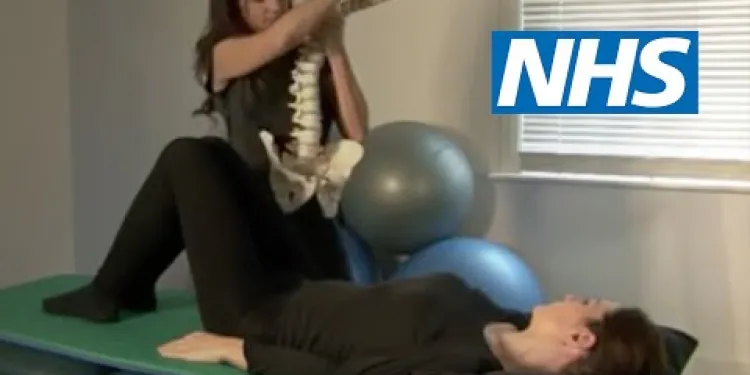
Exercises for sciatica: herniated or slipped disc | NHS
Relevance: 90%
-
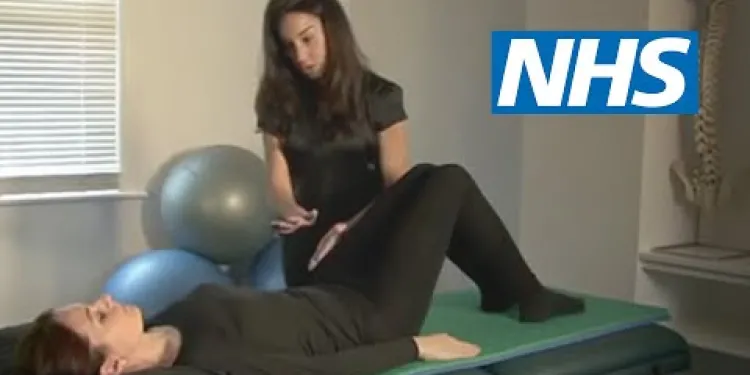
Exercises for sciatica: degenerative disc disease | NHS
Relevance: 68%
-

Evidence-Based Interventions: injections for non-specific low back pain without sciatica
Relevance: 30%
-
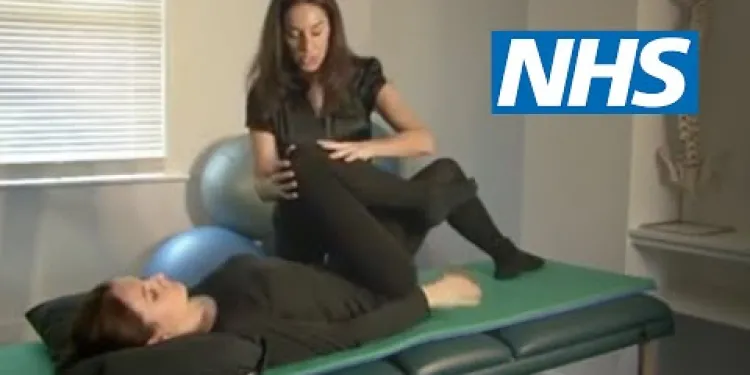
Exercises for sciatica: spinal stenosis | NHS
Relevance: 27%
-
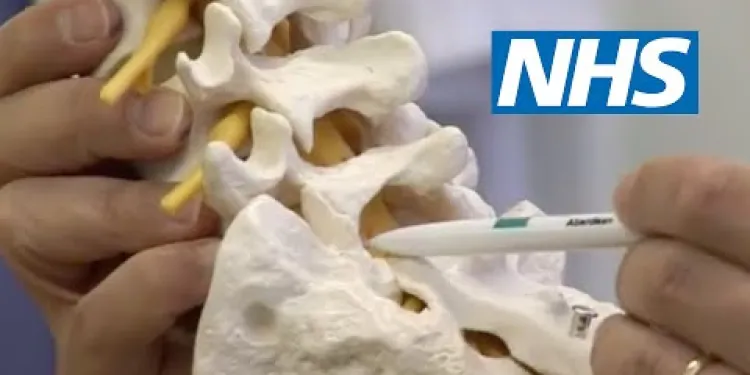
Lumbar surgery | NHS
Relevance: 24%
-

Exercises for sciatica: piriformis syndrome | NHS
Relevance: 23%
-
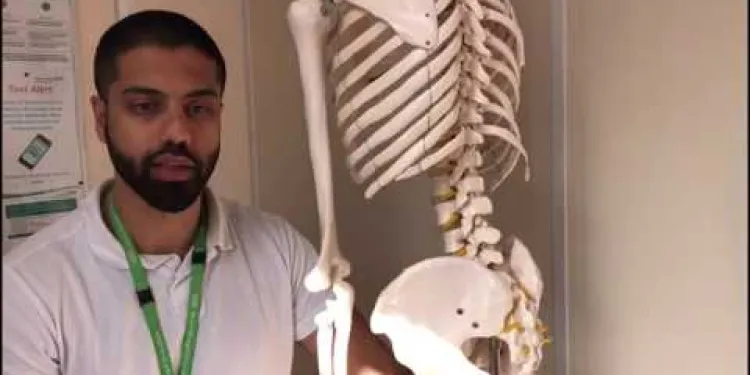
MSK Lower Back Pain information video
Relevance: 17%
-

How to treat back pain | NHS
Relevance: 17%
-

Back stretches | NHS
Relevance: 15%
-

Useful information for patients with lower back pain
Relevance: 12%
-

Neck Exercises
Relevance: 12%
-

Neck Exercises
Relevance: 11%
-

Shoulder Exercises 1
Relevance: 11%
-
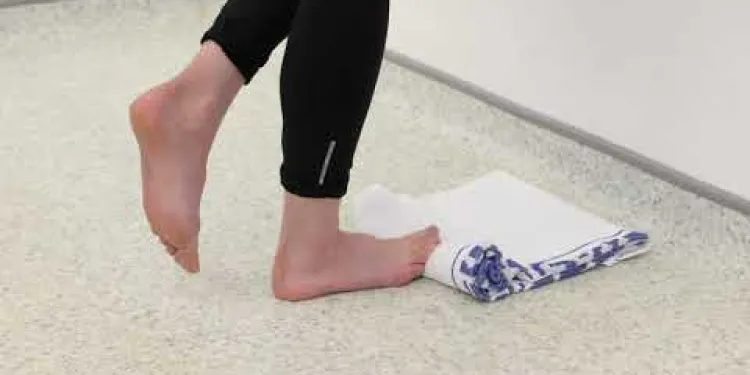
Plantar Fascia Loading Exercise (High Load Exercise)
Relevance: 11%
-

Facial exercise programme
Relevance: 11%
-
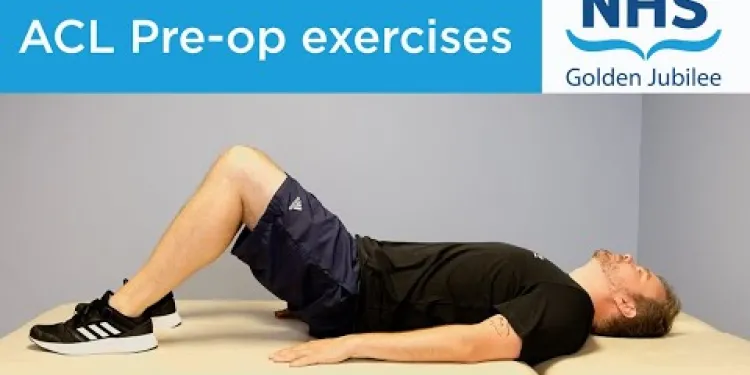
ACL pre-operation exercises
Relevance: 11%
-
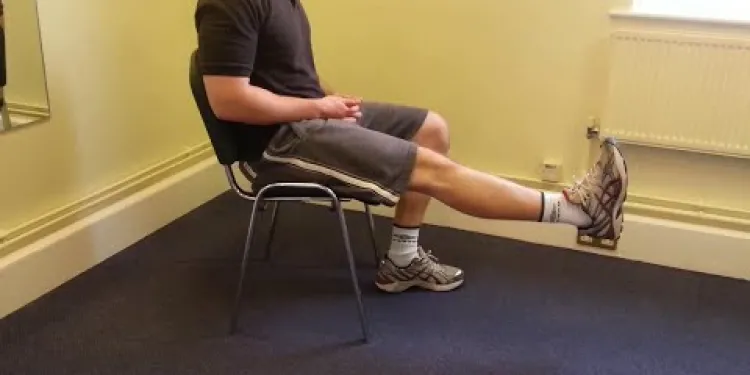
Knee Care Exercises
Relevance: 11%
-

Exercise in patients with a neuropathy
Relevance: 11%
-
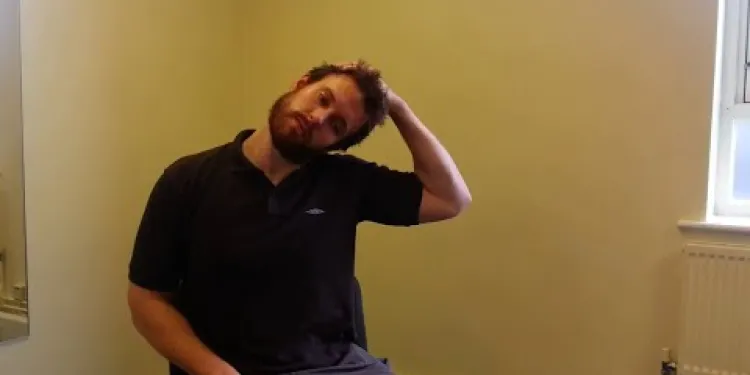
Neck Care Exercises
Relevance: 11%
-

Is it safe to exercise with a cold?
Relevance: 11%
-

ACL exercises post-operation
Relevance: 11%
-
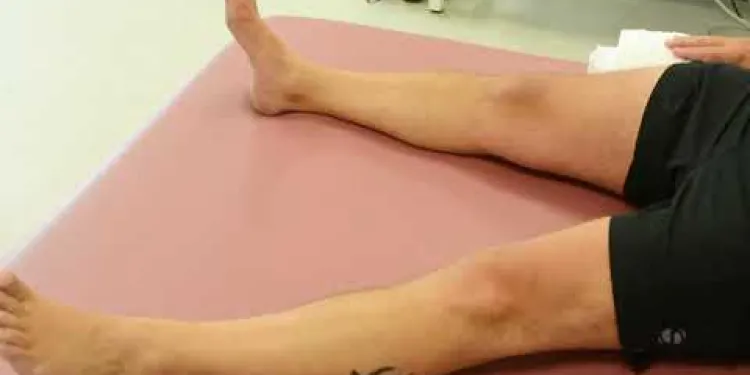
Joint School - Hip Exercises
Relevance: 10%
-
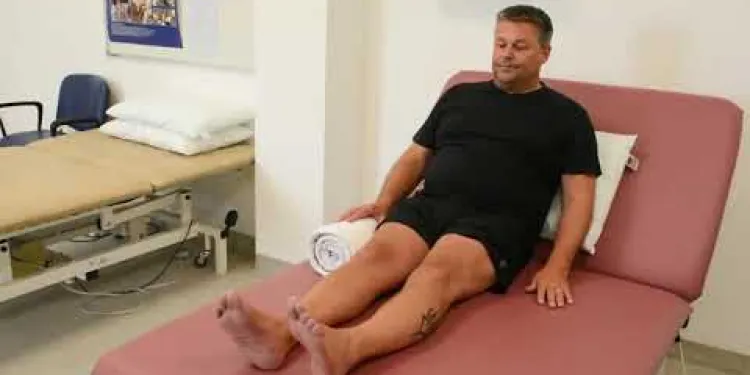
Joint School - Knee Exercises
Relevance: 10%
-

Will I be able to engage in physical exercise?
Relevance: 10%
-
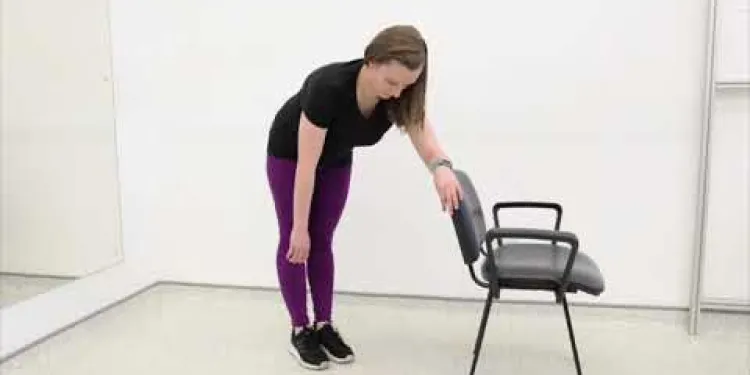
Frozen shoulder Pendular Exercises
Relevance: 10%
-
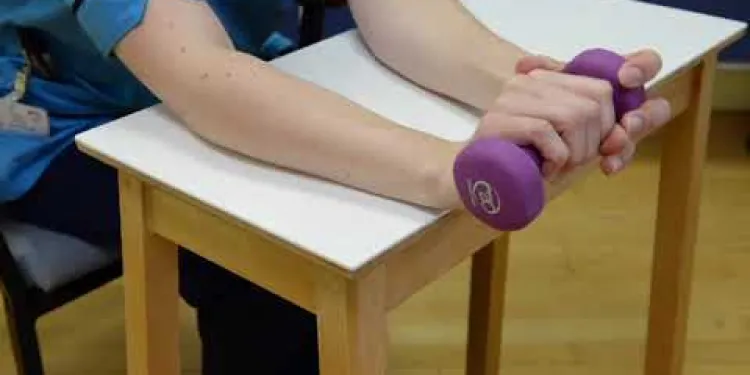
Elbow Eccentric Strengthening Exercise
Relevance: 10%
-

Exercise Routines for Busy Parents
Relevance: 10%
-

Can exercises help with labor preparation?
Relevance: 10%
-

Are there any exercises involved in air physiotherapy?
Relevance: 10%
-

How does exercise benefit pregnancy?
Relevance: 10%
-

Falls Prevention - strength and balance exercises
Relevance: 10%
-

Can exercise influence cortisol levels?
Relevance: 10%
-

Can I do high-impact exercises while pregnant?
Relevance: 10%
-

Can I do abdominal exercises during pregnancy?
Relevance: 10%
-
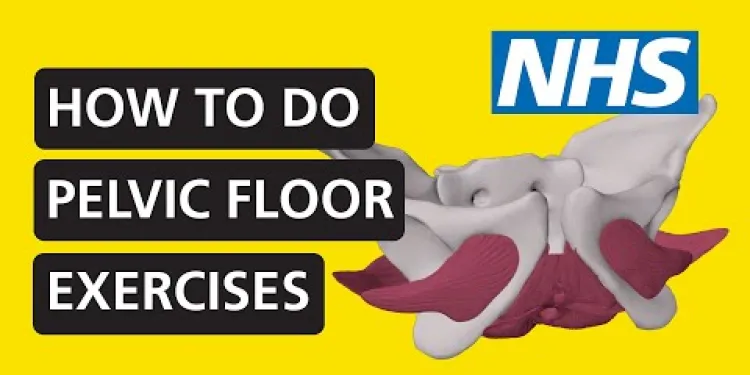
How to do pelvic floor exercises | NHS
Relevance: 10%
-

Is it safe to exercise outside during a heatwave?
Relevance: 10%
-

What exercises can I do during pregnancy?
Relevance: 10%
-

Can exercise trigger asthma symptoms?
Relevance: 10%
-
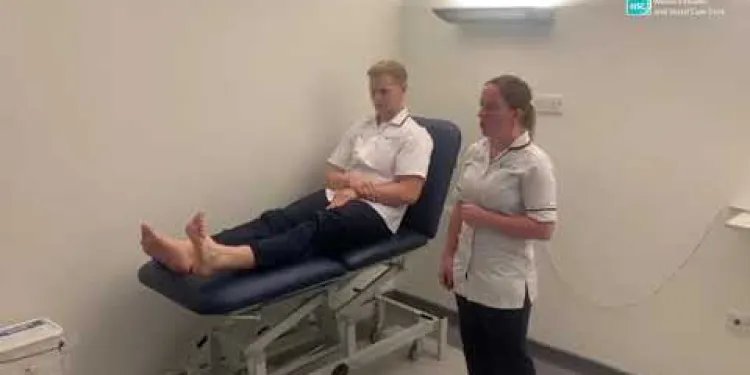
Physiotherapy Exercises following an Ankle Fracture
Relevance: 10%
Exercises for Sciatica: Herniated or Slipped Disc | NHS
Sciatica and herniated or slipped discs are common back issues faced by many in the UK. Proper exercises can help alleviate the pain associated with these conditions and improve overall spine health. The NHS offers guidance on exercises that can be particularly useful for managing these symptoms.
Understanding Sciatica and Herniated Discs
Sciatica is a condition where irritation or compression of the sciatic nerve causes pain that radiates from the lower back down to the legs. A herniated or slipped disc occurs when a spinal disc moves out of place, pressing on surrounding nerves, which can result in similar symptoms.
Benefits of Exercise
Engaging in the right kind of exercises can help by:
- Reducing pain and inflammation
- Improving flexibility and mobility
- Strengthening muscles that support the spine
- Promoting healing
Recommended Exercises
The NHS recommends specific exercises to help manage sciatica and a herniated or slipped disc. Always ensure you perform these exercises slowly and consistently, and consult with a healthcare professional before starting any new exercise regime.
Piriformis Stretch
This stretch targets the piriformis muscle, which can irritate the sciatic nerve if tight. To perform this:
- Lie on your back with both feet flat on the floor and knees bent.
- Place the right ankle on the left knee, creating a figure-four.
- Gently pull the left thigh toward your chest and hold for 30 seconds.
- Repeat on the other side.
Cat-Cow Stretch
This move helps to mobilise the spine and relieve tension. Follow these steps:
- Start on your hands and knees, shoulders directly over your hands and hips over knees.
- Inhale as you drop your stomach towards the floor, lifting your head and tailbone (Cow position).
- Exhale as you round your back towards the ceiling, tucking your chin and pelvis (Cat position).
- Repeat for 10 repetitions.
Lower Back Extensions
This exercise strengthens the lower back muscles:
- Lie face down with your elbows bent and palms flat on the floor at shoulder level.
- Gently push your hands to lift your chest off the floor, keeping your hips grounded.
- Hold for 5 seconds and then slowly lower down.
- Repeat 10 times.
Bridging Exercise
The bridging exercise helps to strengthen the muscles in the lower back, buttocks, and hips:
- Lie on your back with your knees bent and feet flat on the floor.
- Slowly lift your hips toward the ceiling, squeezing your glutes and core.
- Hold the position for a few seconds before slowly lowering back down.
- Repeat 10-15 times.
Conclusion
Consistent and gentle exercises can significantly improve the symptoms of sciatica and herniated or slipped discs. Always follow NHS guidance and consult with healthcare professionals to tailor exercises to your specific needs.
Exercises for Sciatica: Herniated or Slipped Disc | NHS
Many people in the UK have back problems like sciatica or herniated (slipped) discs. Doing the right exercises can help reduce pain and make your back feel better. The NHS has suggestions for exercises that can help with these problems.
Understanding Sciatica and Herniated Discs
Sciatica is when the sciatic nerve gets irritated or squeezed, causing pain from your lower back down your legs. A herniated or slipped disc is when a disc in your spine moves out of place and presses on nerves, causing pain.
Benefits of Exercise
Doing exercises can help by:
- Making pain and swelling less
- Helping you move more easily
- Making the muscles around your spine stronger
- Helping your body heal
Recommended Exercises
The NHS suggests certain exercises for sciatica and herniated discs. Always do these exercises slowly and regularly. Talk to a doctor before starting new exercises.
Piriformis Stretch
This stretch helps the piriformis muscle, which can press on the sciatic nerve if tight. To do this:
- Lie on your back with feet flat on the floor and knees bent.
- Place your right ankle on your left knee to make a figure-four shape.
- Gently pull your left thigh towards your chest and hold for 30 seconds.
- Do the same on the other side.
Cat-Cow Stretch
This exercise helps your spine and relieves tension. Do it like this:
- Start on your hands and knees, with shoulders above hands and hips above knees.
- Breathe in and drop your stomach towards the floor, lifting your head and bottom (Cow position).
- Breathe out and round your back towards the ceiling, tucking your chin and hips (Cat position).
- Do this 10 times.
Lower Back Extensions
This exercise makes the lower back muscles stronger:
- Lie face down with elbows bent, palms flat on the floor by your shoulders.
- Gently push with your hands to lift your chest off the floor, keeping hips down.
- Hold for 5 seconds, then lower slowly.
- Do this 10 times.
Bridging Exercise
This exercise strengthens the muscles in your lower back, buttocks, and hips:
- Lie on your back with knees bent and feet flat on the floor.
- Lift your hips towards the ceiling, squeezing your buttocks.
- Hold for a few seconds, then lower slowly.
- Do this 10-15 times.
Conclusion
Doing gentle exercises regularly can help with sciatica and herniated discs. Always follow NHS advice and talk to healthcare professionals to make sure exercises are right for you.
Frequently Asked Questions
What is sciatica?
Sciatica is a condition characterized by pain that radiates along the sciatic nerve, which runs from your lower back, through your hips and buttocks, and down each leg. It commonly occurs when a herniated disk or bone spur compresses part of the nerve.
What are the symptoms of sciatica?
Symptoms of sciatica include pain radiating from your lower back to your buttock and down the back of your leg, numbness or weakness in your leg, tingling sensation along the nerve, and difficulty moving or controlling your leg.
What causes sciatica?
Sciatica is often caused by a herniated or slipped disc, bone spurs on the spine, spinal stenosis, or muscle inflammation that compresses the sciatic nerve.
How is sciatica diagnosed?
Sciatica is diagnosed through a combination of physical examination, medical history, and imaging tests such as X-rays, MRI, or CT scans to identify the underlying cause of nerve compression.
What are some recommended exercises for sciatica?
Recommended exercises for sciatica include pelvic tilts, knee-to-chest stretches, lower trunk rotations, and sciatic nerve glide exercises. These exercises may help to relieve discomfort and improve mobility.
How often should I do exercises for sciatica?
You should perform the exercises regularly, ideally once or twice a day, but it’s essential to listen to your body and avoid overdoing it. Consistency is key to achieving long-term benefits.
Can exercises make sciatica worse?
Exercises can sometimes aggravate sciatica if performed incorrectly or too aggressively. It is important to follow recommended guidelines and consult with a physiotherapist for tailored advice. If pain worsens, stop the exercise and seek medical attention.
Are there any exercises I should avoid if I have sciatica?
You should avoid exercises that strain your lower back or cause pain, such as toe touches, sit-ups, and heavy lifting. High-impact activities like running or jumping should also be avoided until symptoms improve.
Can walking help relieve sciatica symptoms?
Yes, walking can help relieve sciatica symptoms by promoting blood flow and helping with mobility. Start with short walks and gradually increase the duration as tolerated.
How long does it take to see improvements from exercises for sciatica?
Some individuals may notice improvements within a few weeks of consistent exercise, while others may take longer. It varies depending on the severity of the condition and individual response to the exercises.
Is it safe to exercise during a sciatica flare-up?
You may need to modify or reduce the intensity of your exercises during a sciatica flare-up. Gentle stretching and low-impact activities are generally safe, but it's important to avoid movements that exacerbate the pain.
Should I see a physiotherapist for sciatica exercises?
Yes, consulting a physiotherapist is advisable as they can provide tailored exercises, correct your form, and monitor your progress to ensure you are doing exercises safely and effectively.
Can other treatments complement exercises for sciatica?
Yes, other treatments such as pain relief medications, hot or cold compresses, massage, and acupuncture may complement exercises and help alleviate sciatica symptoms.
When should I see a doctor for sciatica?
You should see a doctor if your sciatica symptoms are severe, persist for more than a few weeks, or worsen despite self-care measures. Immediate medical attention is needed if you experience loss of bladder or bowel control or significant leg weakness.
Can lifestyle changes help manage sciatica?
Yes, maintaining a healthy weight, good posture, regular physical activity, and avoiding prolonged sitting can help manage and prevent sciatica symptoms.
What is sciatica?
Sciatica is when the big nerve in your back gets hurt or squeezed. It can make your back, bottom, and leg hurt.
Here are some tips to help you:
- Use pictures to understand better.
- Ask someone to explain it to you.
- Use a video to learn more.
- Take breaks if it's hard to understand at once.
Sciatica is when it hurts because the big nerve in your back is upset. This nerve goes from your lower back, through your hips and bottom, and down each leg. It can hurt when a soft cushion between the bones in your back, or a small bony bump, pushes on the nerve.
What signs show you have sciatica?
Sciatica is when a nerve in your back is hurt. It can make your leg feel funny.
Signs of sciatica:
- Your leg or bottom hurt a lot.
- Your back hurts on one side.
- Your leg feels like pins and needles.
- Your leg feels numb or weak.
What can help:
- Ask an adult to take you to the doctor.
- Rest and lie down.
- Use a warm or cold pack on your back.
Sciatica causes pain. The pain starts in your lower back. It goes to your buttock and down the back of your leg. You might also feel tingling, like pins and needles, in your leg. Your leg may feel numb or weak. It might be hard to move or control your leg.
What makes sciatica happen?
Sciatica happens when something presses on the sciatic nerve. This can be a disc that slipped out of place, extra bone in the spine, a narrow space in the spine, or sore muscles.
How do doctors find out if you have sciatica?
Doctors check if you have sciatica by asking questions and doing some tests. They might ask where you feel pain and when it started. Doctors might also move your leg to see what hurts. Sometimes, they might take pictures of your back with special machines like X-rays or MRIs. These pictures help doctors find out what's wrong.
If you have trouble reading, you can use a reading ruler or ask someone to read with you. You might also find it helpful to listen to the information being read aloud. Using simple tools like these can make it easier to understand.
Doctors find out if you have sciatica by looking at your body, asking about your health, and by using pictures like X-rays, MRI, or CT scans to see what's squeezing your nerves.
What exercises can help if you have sciatica?
Sciatica is when you have pain in your lower back or leg.
Here are some exercises that might help:
- Stretching: Gently stretch your back and legs. This can help make the pain better.
- Walking: Try to walk a little every day. Walking can help your back feel better.
- Swimming: Swimming is good exercise and can be easy on your back.
- Yoga: Simple yoga moves can help stretch and strengthen your back.
Always talk to a doctor before starting new exercises if you have pain. They can help you know what is best for you.
Helpful tip: Try using a heat pack on your back. It might make you feel better.
If you have a sore back and leg, some helpful exercises are:
- Tilt your hips back and forth while standing or lying down.
- Gently pull one knee to your chest while lying on your back.
- Move your lower body from side to side while lying on your back.
- Do special stretches for the big nerve in your leg called the sciatic nerve.
These exercises might help you feel better and move more easily.
How much should I do exercises for sciatica?
If you have sciatica, it is important to do exercises.
Try to do exercises a few times each week.
Ask a doctor or helper to show you good exercises.
Use pictures or videos to help you follow along.
Stop if you feel pain and tell a helper.
Try to do the exercises every day, one or two times a day. But make sure you listen to your body and don’t do too much. Doing the exercises regularly helps you get better over time.
You can use tools like a calendar or a chart to keep track of when you do the exercises. A reminder on your phone or a sticky note can also help you remember to exercise.
Can Exercise Make Sciatica Worse?
Doing exercise can help with sciatica, but sometimes it can make it worse. It is important to do the right exercises.
If you have pain in your leg or back, talk to a doctor before starting exercises. They can tell you which exercises are safe.
Using cushions for support while sitting, and warm pads on sore spots might help too.
Listen to your body, and stop if anything hurts.
Sometimes, exercises can make sciatica pain worse if they are not done right. It's really important to follow safe tips and ask a physiotherapist for help. If your pain gets worse, stop doing the exercise and talk to a doctor.
What exercises should I avoid if I have sciatica?
Do you have sciatica? If yes, some exercises might hurt you.
Here are things you can do:
- Ask a doctor what exercises are safe for you.
- Try gentle stretches to feel better.
Remember, always move in a way that feels good for you.
You should not do exercises that hurt your lower back. This means don't do things like touching your toes, sit-ups, or lifting heavy things. Also, try not to run or jump until you feel better.
Can walking help with sciatica pain?
Sciatica is when you feel pain in your lower back or leg.
Walking might help you feel better.
Some tips to help you:
- Start with short walks.
- Wear comfy shoes.
- Stop if it hurts a lot.
Always ask a doctor for advice if you are unsure.
Walking can help when you have sciatica. It gets the blood moving and helps you to keep moving. Start with short walks and slowly make them longer if you feel okay.
How long before I feel better from sciatica exercises?
It can take a few weeks to feel better after doing exercises for sciatica. Do the exercises every day. Talk to a doctor if the pain stays.
Try watching videos to learn the exercises. You can also ask someone to help you.
Some people feel better after doing exercises for a few weeks. Other people might need more time. It depends on how bad the problem is and how their body reacts to the exercises.
Can I exercise if my sciatica hurts?
If you have sciatica pain, you might need to change your exercises. Do easy stretches and gentle activities. This is usually safe. Don't do exercises that make the pain worse.
Should I see a physiotherapist for sciatica exercises?
Is your back or leg hurting because of sciatica? A physiotherapist can help. They will show you exercises to feel better. Seeing a physiotherapist is a good idea.
Here are some tools that can help:
- Try simple stretches at home.
- Watch videos online that show exercises for sciatica.
- Use a soft cushion when sitting to feel more comfortable.
Yes, it is a good idea to talk to a physiotherapist. They can give you special exercises just for you. They help you do the exercises the right way and watch how you are doing to keep you safe and help you get better.
Can other treatments help with exercises for sciatica?
Yes, other ways can help, like medicine for pain, using hot or cold packs, massage, and acupuncture. These can work with exercises to help make sciatica feel better.
When should I go to the doctor for sciatica pain?
You should see a doctor if:
- The pain is very bad and doesn't get better.
- The pain makes it hard to walk or move.
- You feel numb, weak, or can't move your leg.
- You have problems going to the bathroom.
It is important to get help. A doctor can make you feel better.
Here are some things that might help:
- Have someone go with you to the doctor.
- Write down how you feel to tell the doctor.
- Ask the doctor to explain things clearly.
Go to a doctor if your sciatica is very bad, lasts for more than a few weeks, or gets worse even when you take care of yourself. See a doctor right away if you can't control your bladder or bowel, or if your leg feels very weak.
Can changing how you live help with sciatica?
Yes, keeping a healthy weight, sitting and standing up straight, moving your body often, and not sitting for too long can help stop and control sciatica pain.
Useful Links
- Ergsy carfully checks the information in the videos we provide here.
- Videos shown by Youtube after a video has completed, have NOT been reviewed by ERGSY.
- To view, click the arrow in centre of video.
- Most of the videos you find here will have subtitles and/or closed captions available.
- You may need to turn these on, and choose your preferred language.
- Go to the video you'd like to watch.
- If closed captions (CC) are available, settings will be visible on the bottom right of the video player.
- To turn on Captions, click settings .
- To turn off Captions, click settings again.
More Items From Ergsy search
-

Exercises for sciatica: herniated or slipped disc | NHS
Relevance: 100%
-

Exercises for sciatica: herniated or slipped disc | NHS
Relevance: 90%
-

Exercises for sciatica: degenerative disc disease | NHS
Relevance: 68%
-

Evidence-Based Interventions: injections for non-specific low back pain without sciatica
Relevance: 30%
-

Exercises for sciatica: spinal stenosis | NHS
Relevance: 27%
-

Lumbar surgery | NHS
Relevance: 24%
-

Exercises for sciatica: piriformis syndrome | NHS
Relevance: 23%
-

MSK Lower Back Pain information video
Relevance: 17%
-

How to treat back pain | NHS
Relevance: 17%
-

Back stretches | NHS
Relevance: 15%
-

Useful information for patients with lower back pain
Relevance: 12%
-

Neck Exercises
Relevance: 12%
-

Neck Exercises
Relevance: 11%
-

Shoulder Exercises 1
Relevance: 11%
-

Plantar Fascia Loading Exercise (High Load Exercise)
Relevance: 11%
-

Facial exercise programme
Relevance: 11%
-

ACL pre-operation exercises
Relevance: 11%
-

Knee Care Exercises
Relevance: 11%
-

Exercise in patients with a neuropathy
Relevance: 11%
-

Neck Care Exercises
Relevance: 11%
-

Is it safe to exercise with a cold?
Relevance: 11%
-

ACL exercises post-operation
Relevance: 11%
-

Joint School - Hip Exercises
Relevance: 10%
-

Joint School - Knee Exercises
Relevance: 10%
-

Will I be able to engage in physical exercise?
Relevance: 10%
-

Frozen shoulder Pendular Exercises
Relevance: 10%
-

Elbow Eccentric Strengthening Exercise
Relevance: 10%
-

Exercise Routines for Busy Parents
Relevance: 10%
-

Can exercises help with labor preparation?
Relevance: 10%
-

Are there any exercises involved in air physiotherapy?
Relevance: 10%
-

How does exercise benefit pregnancy?
Relevance: 10%
-

Falls Prevention - strength and balance exercises
Relevance: 10%
-

Can exercise influence cortisol levels?
Relevance: 10%
-

Can I do high-impact exercises while pregnant?
Relevance: 10%
-

Can I do abdominal exercises during pregnancy?
Relevance: 10%
-

How to do pelvic floor exercises | NHS
Relevance: 10%
-

Is it safe to exercise outside during a heatwave?
Relevance: 10%
-

What exercises can I do during pregnancy?
Relevance: 10%
-

Can exercise trigger asthma symptoms?
Relevance: 10%
-

Physiotherapy Exercises following an Ankle Fracture
Relevance: 10%


